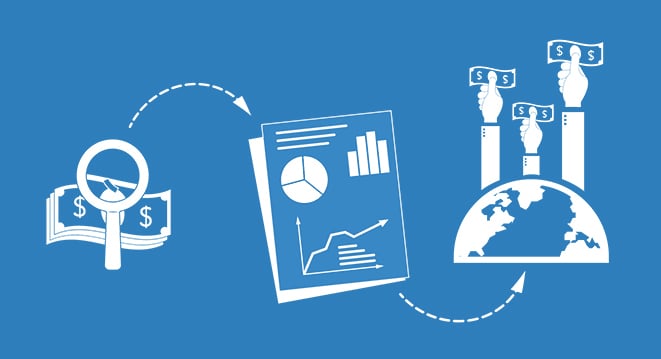A simple, proven metric can help businesses measure customer experience and find ways to improve it. Shipping performance can have a large effect – bad or good – on the score
Move over, Rodney Dangerfield. Shipping shares your “I don’t get no respect” challenge. You’re basically invisible to customers when you do everything right – especially delivering on time. It’s usually only when logistics prevent a guaranteed delivery time from being met, or when a package arrives damaged, that customers speak up and voice their displeasure.
So, how does an organization measure customer satisfaction if they typically only get input when something goes wrong? A simple and effective way is to measure and find ways to increase the value of your Net Promoter Score (NPS). Here’s why NPS is the number you need to grow and why you should pay attention to it.
The opinions consumers trust
Fueled by social media, consumers today prefer to make purchasing decisions by going online and researching, and by asking family or friends what they recommend. These endorsements are massively valuable to consumers. At least 83 percent of those surveyed say they trust recommendations from friends and family more than any other form of advertising.
So, in a perfect world, happy customers are telling all their friends and family about their positive experience with a company’s product or service. The flip side is that an unhappy customer is telling all their friends and family about the less-than-positive experience they had. Now, multiply that bad news – because it turns out that customers are more likely to share a bad experience, and they’ll tell nearly three times as many people. Today’s on-demand economy makes it imperative to avoid the negative impact that late deliveries could have on your company’s reputation.
That’s why it’s crucial for an organization to vacuum up as much customer feedback as it can. “What are we doing to make you unhappy?” They must find ways to make satisfied customers recommend them to friends and family, but even more importantly, they have to find ways to find and resolve the negative customer experiences that are far more likely to be shared. Knowing their NPS can help.
Rating customer feelings
Companies have to survey their customers to determine their Net Promoter Score. It’s a simple, single question – and it’s probably pretty familiar. “On a scale of 0 to 10, how likely are you to recommend us to a friend?”
- Those who give scores of 0–6 are known as detractors.
- Those who give scores of 7–8 are known as passives.
- Those who give scores of 9–10 are known as promoters.
The good news is that the passives get discarded. They’re indifferent – at least at the present time. The better news is that the promoters have identified themselves as loyal and enthusiastic customers who are marketing for the company by telling friends and family. Alas, the bad news is that the detractors are those customers who didn’t care for the experience they had; and remember, they’ve been known to tell people about their dissatisfaction three times as often as the promoters will share their praise.
Subtract the percentage of detractor responses from the percentage of promoter responses, and that’s the Net Promoter Score. It’ll range from -100 to 100, with a negative score indicating more detractors than promoters.
71lbs earns a strong NPS
“NPS is the proudest metric for me,” says Jose Li, CEO and Founder of 71lbs. “Our high score of 78 is primarily due to the simplicity of the service we offer. There are no sign-up fees, and no monthly fees. You pay for performance, so there’s no need to budget.
“Our NPS tells us that we’ve structured our company to offer maximum value and satisfaction to our clients,” says Li. “Every month, 71lbs contributes revenue back to the bottom line. Our clients gladly give us high scores when asked if they would recommend our practically invisible services to others.” For companies needing a boost in their NPS and their revenue, 71lbs is ready to help.
Finding ways to boost customer satisfaction
NPS is an effective way to determine customer loyalty, and a company’s shipping efforts can have a drastic effect on it in either direction. Online shoppers have developed a high standard, often expecting packages to arrive within a few days. If a package is late or damaged, a ding to the seller’s NPS is almost a given, regardless of who was at fault.
A low NPS calculation is disheartening. But unless it’s measuring a beloved company like Apple, Starbucks, or Costco, a low NPS provides opportunities to dig into customer feedback and find ways to make improvements in the customer experience.
The opportunity to make the greatest impact lies in reaching out to detractors – those customers who gave a 0–6 satisfaction score. Let’s say an average promoter tells 10 friends or family members about the company. Statistically, a detractor might tell up to 30 friends of family members to stay away. So, winning over a single detractor could be more valuable than shrinking the number of passives or growing the number of promoters. Minimizing complaints about the shipping experience can be a great way to turn detractors into promoters.
The bottom line: A better NPS strongly correlates to more company growth. When you increase the score, you add power to your marketing because your own customers become advocates. And according to Nielsen research, prospects are four times more likely to become customers when they are referred by a friend.
Tracking NPS can make you more aware of why customers are pleased with the experience you provide. “71lbs is like having free insurance without paying any premium,” a logistics manager recently told us. “It’s a no-brainer.”
Does your customer experience include on-time parcel delivery? Find out how auditing your shipping process through 71lbs can help uncover ways to increase customer satisfaction and minimize the detractors. Contact 71lbs for more info.



